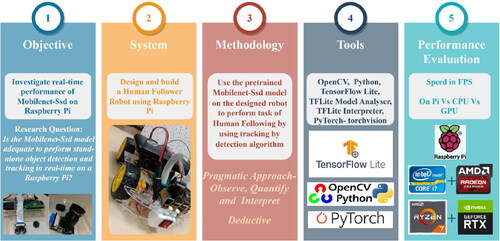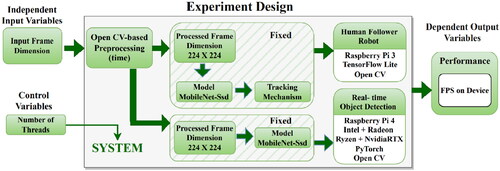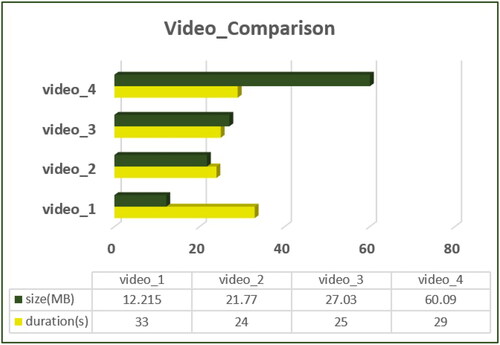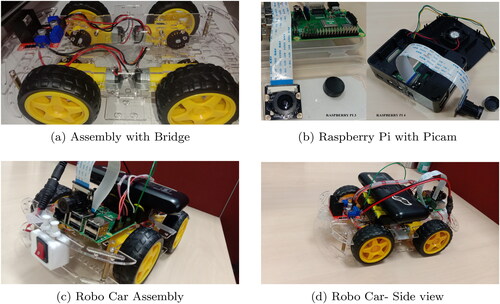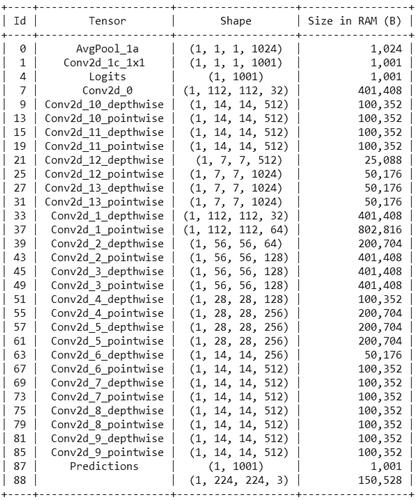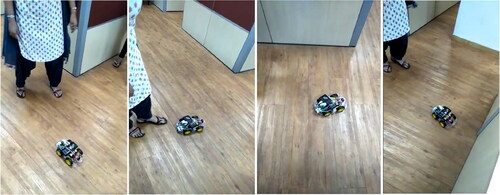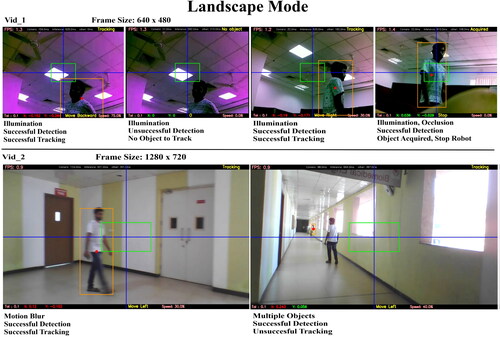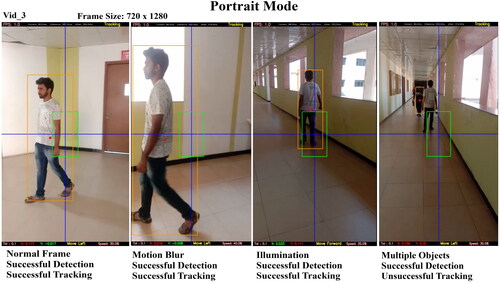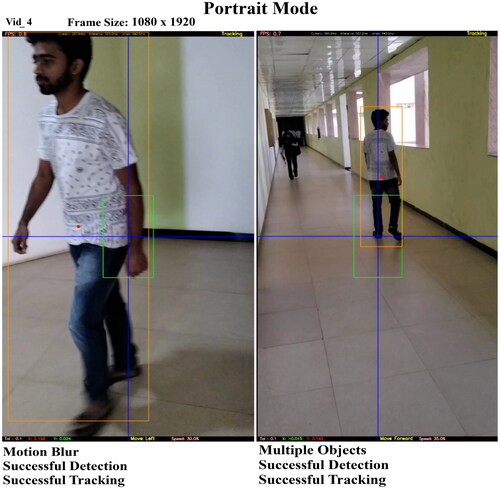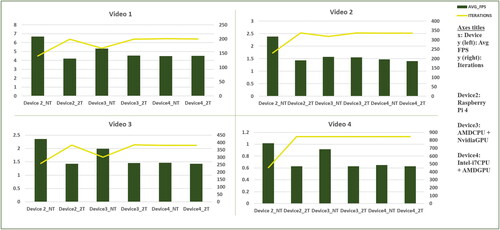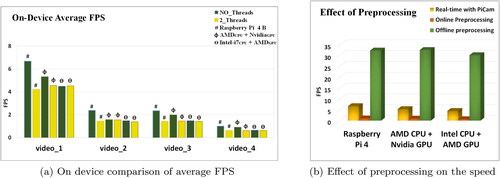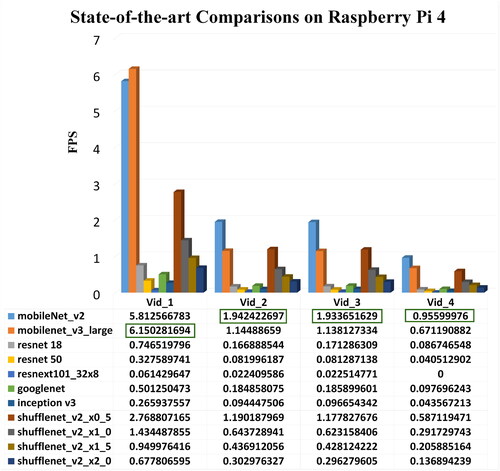Figures & data
Figure 1. The network architecture of Single-Shot Multibox Detector (SSD) with the MobileNet backbone.

Figure 4. Variable relationship when using TensorFlow support: experiment design 1 (note: controlled/fixed variables have been set to neutralize their effect on the observed variable to provide a fair comparison across trials).
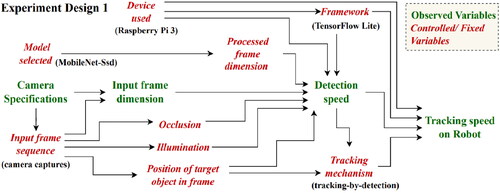
Figure 5. Variable relationship when using PyTorch support: experiment design 2 (note: because the Pi 3 was insufficient to run PyTorch, the device was updated to the Pi 4. PyTorch also lacked an onboard interpreter, which is necessary for tracking).
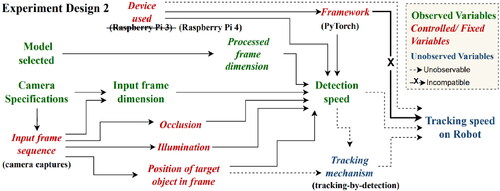
Figure 7. Modular design: depicting the interactions between the processing module, the controller module, and the object detection and tracking module.

Figure 9. Schematic diagram - human follower robot, depicting the physical connections between the GPIO pins of the Raspberry Pi board, the L298N H-Bridge, the DC motors, and the battery.
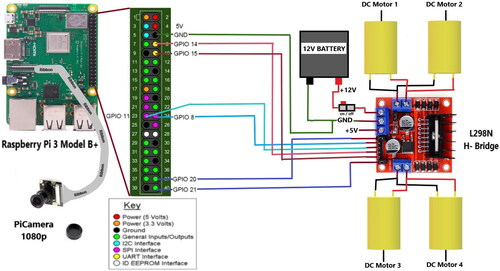
Figure 10. Design of the robot view; the center of the frame has a box defined by the threshold, the status of the robot is displayed in the top right corner, and the speed in FPS is displayed in the top left corner.
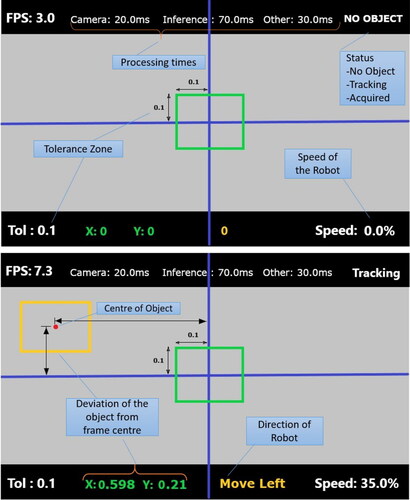
Figure 11. State transition diagram; ‘start’ and ‘stop’ refer to the begin and end of frames, ‘no object’ and ‘acquired’ states cause the robot to stop, and ‘tracking’ state causes the robot to move and follow the human.
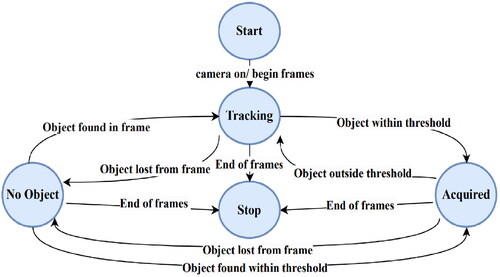
Figure 22. State-of-the-art model comparisons of detection speed in FPS across all the devices for the Pi camera feed.
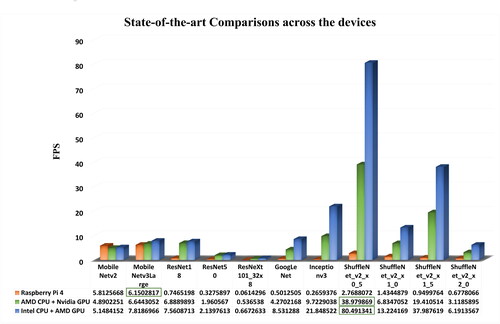
Table A1. Device specifications.
Table 1. Input data: videos captured for the experiment.
Table 2. Tracking results obtained for the different input video sequences.
Table 3. Full factorial design table recording FPS using PyTorch.
Table 4. Full factorial design table recording number of iterations per video using PyTorch.
Table 5. Summary of observations.
apacite.bst
Download (137.8 KB)interacttfqsample.tex
Download Latex File (74.5 KB)references.bib
Download Bibliographical Database File (19.7 KB)interact.cls
Download (23.9 KB)apacite.sty
Download (70.5 KB)Data availability statement
The data, metadata and codes used in this research work will be made available upon reasonable request to the corresponding author’s email-id.

